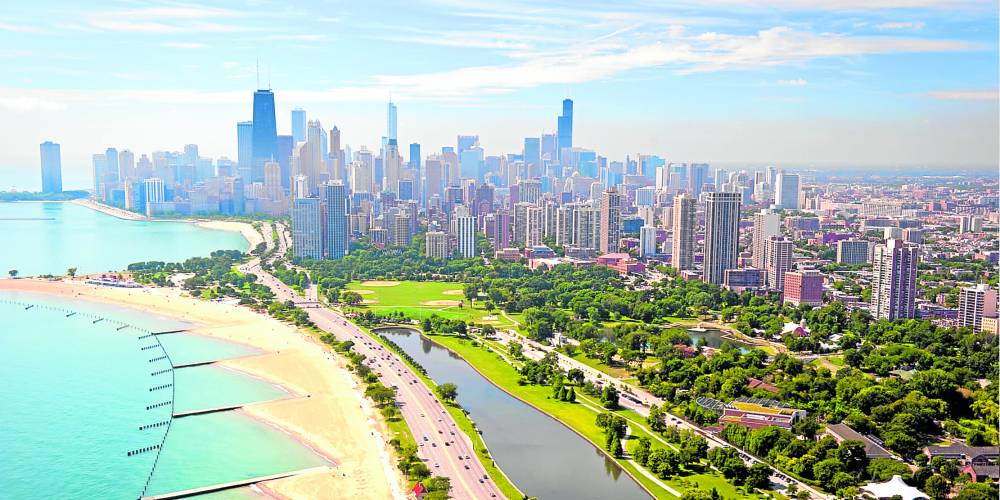Some of the world’s most remarkable cities owe their present-day success to the resilience they displayed in the face of devastating disasters—whether natural or man-made.
Natural calamities such as earthquakes, typhoons, hurricanes, volcanic eruptions, and tsunamis have tested the strength of these cities. In response, they adapted and innovated, developing strategies to mitigate the impacts of hazards beyond human control—an increasingly urgent necessity as climate change continues to intensify such challenges.
For other cities, man-made disasters brought immense destruction, serving as wake-up calls that reshaped their laws, restructured their societies, and transformed the way they were governed.
Here, we highlight four resilient cities that endured intense disruptions in their histories, forcing them to rebuild, adapt, and ultimately thrive, carving out inspiring success stories in the process.
Chicago, Illinois
United States
On October 8, 1871, a fire broke out in a barn on Chicago’s southwest side. Over the next 24 hours, the Great Chicago Fire ravaged the city, killing approximately 300 people, destroying 17,500 buildings, and leaving one third of its population homeless.
In the aftermath, the city launched the “Great Rebuilding,” introducing laws requiring fireproof materials such as brick and stone in new construction.
Initially, compliance was limited due to high costs, but a smaller fire in 1874 that destroyed 800 buildings spurred stricter enforcement. Terra cotta clay became a favored fireproof material, and by the mid 1880s, Chicago was considered one of the most fireproof cities in the nation.
This focus on resilient construction fueled Chicago’s economic and architectural growth, transforming it into a hub for commerce and innovation.
Today, Chicago ranks eighth in the 2024 Global Cities Index and remains the third-largest city in the U.S., with a population of nearly three million. The Chicago Fire Academy, built on the site of the original barn, continues to train firefighters, serving as a testament to the city’s resilience.
Berlin
Germany
Berlin has endured immense challenges, from World War II devastation to Cold War division. During World War II, relentless Allied bombings and the Battle of Berlin in 1945 destroyed 60 percent of the city, including residential areas, cultural landmarks, and infrastructure.
The division of the city during the Cold War, marked by the 1961 construction of the Berlin Wall, deepened the city’s struggles.
The fall of the Berlin Wall on November 9, 1989, ushered in a new era of reunification and redevelopment. Berlin embraced sustainable urban development, integrating green spaces, renewable energy, and efficient public transportation into its rebuilding efforts.
Today, Berlin is a thriving hub for innovation, technology, and culture. Remnants of the Berlin Wall, such as the Berlin Wall Memorial and Checkpoint Charlie, stand as reminders of the city’s resilience and transformation into one of Europe’s most vibrant capitals.
Christchurch
New Zealand
In February 2011, a 6.3-magnitude earthquake struck Christchurch, New Zealand, causing widespread devastation, killing 185 people, and damaging over 100,000 buildings. This disaster, following a 7.1-magnitude quake months earlier, led to a decade-long reconstruction effort.
Christchurch adopted innovative, earthquake-resistant building techniques using resilient materials like steel and glass. The city emphasized sustainability, integrating green spaces and renewable energy into its redevelopment. Heritage sites were preserved, and new infrastructure focused on connectivity and resilience.
Now, Christchurch is a model for sustainable urban development, blending historical preservation with modern innovation and community-centered design.
Tuscaloosa, Alabama
United States
In April 2011, a mile wide tornado devastated Tuscaloosa, Alabama, killing 53 people and injuring 1,200. The storm destroyed critical infrastructure, including emergency facilities and communication systems, presenting immense recovery challenges.
The city launched a redevelopment plan focused on building stronger and smarter. New regulations improved construction standards, and programs like the Commercial Revolving Loan and Homebuyer’s Downpayment Assistance supported businesses and residents.
While some areas remain vacant, Tuscaloosa has embraced this as an opportunity for future growth. The community’s unity and resilience have transformed the city into a symbol of recovery and hope.
Sources: Reuters, National Geographic, Oxford Economics, chicago.gov, architecture.org, ipglobal-ltd.org, originalberlintours.com, dormakaba.com, worldsteel.org, sciencedirect.com, npr.org, alabamanewscenter.com, tuscaloosa.com, wbhm.org
